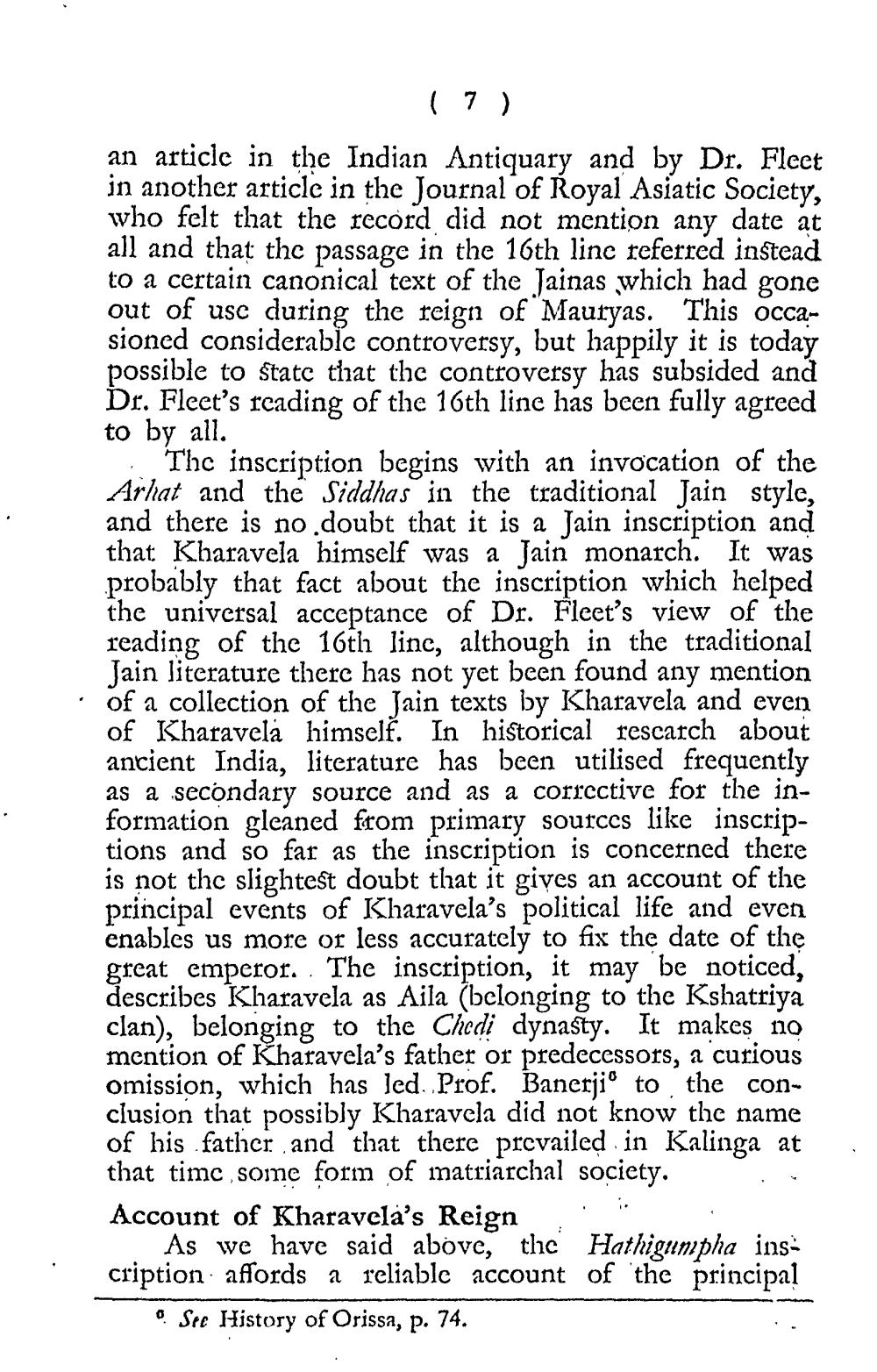________________
( 7 )
an article in the Indian Antiquary and by Dr. Fleet in another article in the Journal of Royal Asiatic Society, who felt that the record did not mention any date at all and that the passage in the 16th line referred instead to a certain canonical text of the Jainas which had gone out of use during the reign of Mauryas. This occasioned considerable controversy, but happily it is today possible to state that the controversy has subsided and Dr. Fleet's reading of the 16th line has been fully agreed to by all.
The inscription begins with an invocation of the Arhat and the Siddhas in the traditional Jain style, and there is no doubt that it is a Jain inscription and that Kharavela himself was a Jain monarch. It was probably that fact about the inscription which helped the universal acceptance of Dr. Fleet's view of the reading of the 16th line, although in the traditional Jain literature there has not yet been found any mention of a collection of the Jain texts by Kharavela and even of Kharavela himself. In historical research about ancient India, literature has been utilised frequently as a secondary source and as a corrective for the information gleaned from primary sources like inscriptions and so far as the inscription is concerned there is not the slightest doubt that it gives an account of the principal events of Kharavela's political life and even enables us more or less accurately to fix the date of the great emperor. The inscription, it may be noticed, describes Kharavela as Aila (belonging to the Kshatriya clan), belonging to the Chedi dynasty. It makes no mention of Kharavela's father or predecessors, a curious omission, which has led Prof. Banerji to the conclusion that possibly Kharavela did not know the name of his father and that there prevailed in Kalinga at that time some form of matriarchal society.
Account of Kharavela's Reign
As we have said above, the Hathigumpha ins cription affords a reliable account of the principal
Ste History of Orissa, P. 74.




